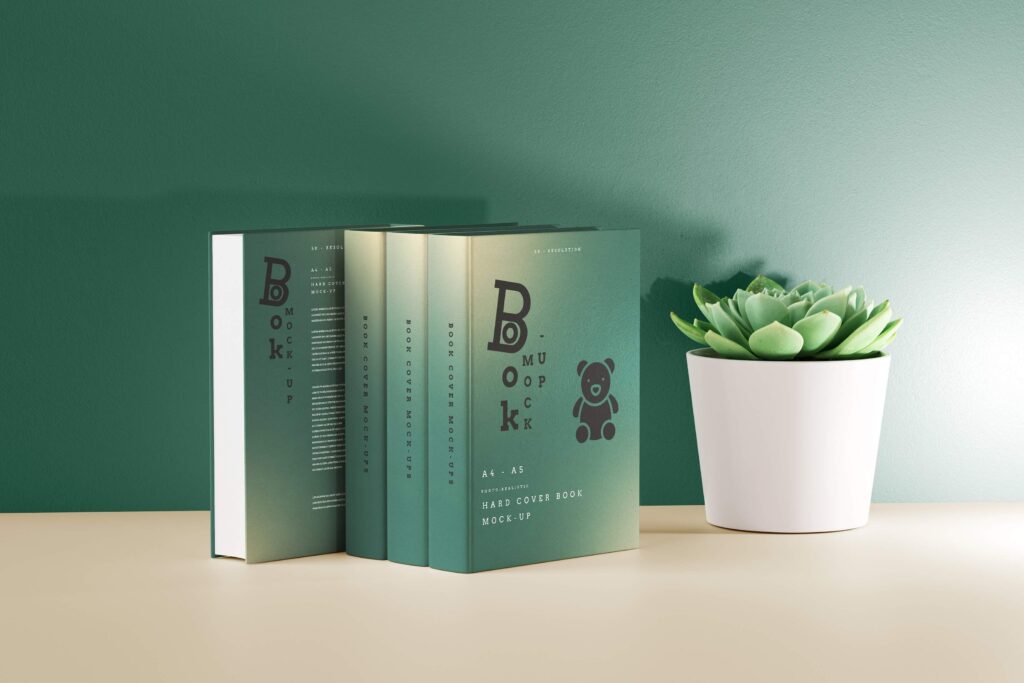Table of Contents
Introduction to the Importance of Book Cover Design
As a self-publisher, you must put much work into a book, from writing to marketing and publishing. Many authors hire publishing and editorial services to do that. These services take over the whole process and develop the best-published version for the readers. This includes the layout and book cover design of your book as well. However, the back of the book gets overlooked the most in the process, especially in eBooks.

As a self-publisher, you must have put in a lot of effort from writing your book to marketing and publishing it. Many authors hire publishing and editorial services to do that. Book marketing and book publishing companies are a one-stop solution that takes care of the entire process for you. Their services may include book cover design, setting the layout, book editing, book proofreading, and publishing services. However, when it comes to a book’s cover design, it is usually often overlooked in the process, especially in eBooks.
Many self-publishing authors think the front cover is the only thing that matters to publish a book. However, back book cover design also holds immense value for effective marketing. A writer should add enough blurb to pique the reader’s interest for all the right reasons. This Blog will explain how to design your book’s back cover yourself.
What to Add to a Back Book Cover Design:
Before you start designing, look for authors in your genre and go through with the cover design of their book to understand the prevalent style and format. Since a back cover is like an ad copy for your book, adding cliches and facts works more effectively than a parade of adverbs and adjectives. Here are all the must-have elements of a book cover design:
Book Synopsis
A summary is a short explanation of what is going on in the book. It works as a marketing pitch that tells you about the characters, setting, premises and any anticipated conflict arising in the plot. Although it should not give away the whole story, it must be powerful enough to hold the reader’s attention momentarily.
Like a movie trailer where you have to create a particular atmosphere to interest a viewer, a book summary should create an enticing image in the reader’s mind. It does not mention the story’s ending or how a conflict was resolved. It’s a hook that leaves the reader in suspense. You don’t have to be very specific in a summary. Leave it to the reader to understand what happens.
Notable Testimonials
Everybody loves an expert’s or a celebrity-recommended product. The same goes for books. If your book has a prominent author or public figure testimonial, it will be considered credible and exciting. Testimonials are short statements or reviews from fellow experienced authors about how good a book is. My copy of Rober Kyosaki’s Rich Dad Poor Dad has testimonials from the Wall Street Journal: “A must-read for millionaires.” and “A book that rocked the financial world.”
Testimonials from credible companies and authors add credibility to your work. A person who reads books recommended by their friends is likely to read a book recommended by a famous editorial firm or their favorite author.
Awards and published work
It may be difficult for new authors to mention published books, so they can just mention their literary prizes and awards on the cover. It has the same role as testimonials since it adds credibility to your work. Authors can add their best-sellers, awards and achievements on the outside to build credentials for their work.
These verifiable statements make the reader think that “it must be a good read if it has won an international award” or something similar. If an author is not well known, but their book is famous, then putting it on the back cover can attract more readers who are fans of your previous work.
Author’s Bio
It is the most prominent part of your back cover design. Imagine someone reading your book, loving every bit but not knowing what kind of person wrote it. An author’s bio is a brief introduction to the author. It can include different information, such as where the author lives, where they grew up, or what their hobby is. Some author bios also contain information like their most famous work or educational background.
Author bios help an author look more humane and relevant to the reader. For example, The esteemed bestselling author Courtney Milan accolades her best-seller status and then delves into her personal information in a witty tone. Meanwhile, April White starts her bio with her exciting experience as an investigator, film producer and a screenwriter.
They can be casual and fun to read. Two to three-liners are often present on the inside flap jackets of hardcover books. However, they can also be added to the back covers of eBooks and paperbacks. Remember to add your picture in your bio if you write anonymously under a secret pen name.
Takeaway
A book’s back cover is a window to the story. Adding 200-300 words will help you bag more readers and buyers. Also, proofread and edit them before sending it finalizing them to avoid any goofs and typos in the final copy.

